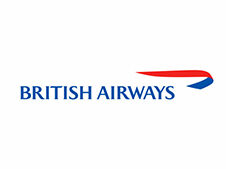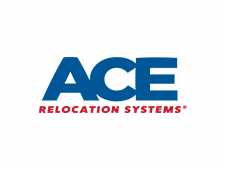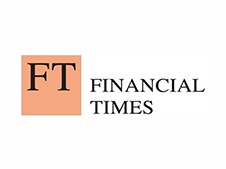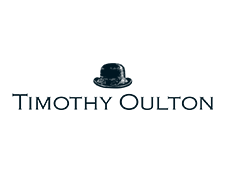The excitement was building ahead of the BABC/Hotel Council Emergency Preparedness Planning Seminar on Tuesday April 17 after BABC President Colin Brown’s interview on KGO Radio, with an insightful live discussion about the need for business preparedness at 6.35 in the morning!
It was the eve of the 106th anniversary of the devastating 1906 San Francisco earthquake and the venue for the event, the Hotel Whitcomb on Market Street, was certainly very appropriate – the hotel was used as a temporary city hall for several years after the historic quake destroyed the previous one.
Around 80 guests attended the seminar, which was energetically moderated by Stasha Wyskiel, Chair of the Bay Area Chapter of the American Red Cross, a highly experienced disaster management practitioner. Jack Boatwright from the US Geological Survey gave the panel’s first presentation, outlining the “complex set of faults running through the whole Bay Area”.
The USGS estimates there is a 2 in 3 chance of a major quake of 6.7 and above striking between 2007 and 2036. Mr Boatwright rounded off his talk with a reference to the USGS’s
“Shake Map” – any time you you feel even a small earthquake you can go online to find out which areas were affected, and how badly.
Lt. Erica Arteseros of the San Francisco Fire Department was up next. She described the development of the Neighbourhood Emergency Response Teams she leads which were set up following the earthquake of 1989, in order to empower people to know what to do in the event of another similar disaster.
“The woman who was killed in Oakland on the Bay Bridge died because of panic,” she explained. “That lady ended up driving the wrong way when the bridge started to shake, and falling through a hole in the structure. It’s panic which is the biggest enemy, and that’s what we try and arm people against.”
For Lt Arteseros, “The key thing is to take personal responsibility. What are your back up communications? You need to think about using pay phones, Facebook, Twitter – it’s really important to let people know you’re ok, as that takes a huge burden off.”
“You need to have policies in place so your employees know what’s expected of them in the event of a disaster, whether they’re at home or at work,” she explained. “You need a mix of employees trained to deal with disasters, and back up, in case all the trained managers are on holiday when something happens.”
Jim Turner, Private Sector Liaison at the Department of Emergency Management, was drawn towards working in the sector after growing up in New Orleans. “Hurricane Katrina was a turning point for me,” he said. “I swore I would make sure whatever city I lived in wouldn’t go through the same kind of thing again. It was a real turning point for emergency management – before there was a sense that whatever happened, someone from the government would come riding over the hill and rescue you. Now it’s clear the resources simply aren’t always there to save the day. The answer is you.”
Mr Turner outlined the particular practical risks faced by San Francisco in the event of a disaster. San Francisco has the second highest population density of any area of the United States, combined with a rapidly aging infrastructure. “In an earthquake, the peninsular could easily become cut off,”he said. “With just a few bridges and key roads down we would become an island.” The projected statistics are frightening; on a major quake it’s estimated some 88 thousand people would be displaced. 63% of people living in the city are renting their accommodation – and only 6-9% of the population has earthquake insurance.
Dr Naveena Bobba, from the San Francisco Public Health Department, explained how her team monitors the risk of an epidemic.
“There are always baseline rates of disease which changes with the seasons – there is always more flu in winter, more H1N1 in summer,” she said. “If there are blips, that is where we take action. We want to put a ring round it, stop it spreading. People are often infectious before they have symptoms themselves – with flu, it’s 2 days. Good hand-washing hygiene is absolutely essential – how many of you wash your hands for the recommended 20 seconds?”
For Dr Bobba, the key message was making sure staff know to stay at home if they are sick and avoid spreading infection. “That directive has to come from management,” she said. “You need less than 100 particles to get norovirus (winter vomiting bug) – an infectious person being sick spreads 1 billion of them! Norovirus is particularly good at spreading quickly as it’s still infectious three days after the symptoms have cleared up – you need to make sure people stay at home during that time as well.”
Finally, Nicola Richardson, Vice-Consul at the British Consulate General in San Francisco, spoke about the kind of support available for British nationals stuck in any kind of disaster situation overseas.
“We can help British nationals and their dependents in a crisis by replacing their passports, contacting friends and family, helping transfer money, or providing assistance if someone is hospitalized or died,” she said. “If it’s bigger than the team locally can deal with then a 24 hour response centre is set up. In a major situation we help support families who’ve come out from the UK, or put on flights to get people home – for example after the Japanese earthquake and tsunami last year, we put on 4 charter flights to get people home.”
“We learnt a lot of lessons from Japan,” she continued. “Communications were down everywhere, but the internet was very resilient. The best way of getting out accurate messages was through our website and Facebook and Twitter feeds.”
After the panel had finished, there was a short question and answer session, followed by networking, drinks and nibbles in the spectacular surroundings of the hotel’s ball room.
You can see all the photos from the event on our Flikr page here.












































